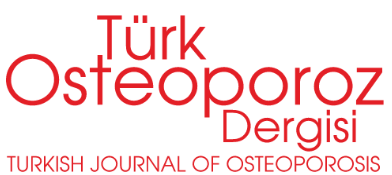ABSTRACT
Aim:
Cortical bone pain in patients with osteoporosis is often overlooked in clinical practice. We investigated the relationship between decrease in femur bone mineral density and the local sensitivity in bone cortex of tibia and radius.
Patients and Methods:
Thirty women with postmenopausal osteoporosis in our outpatient clinic included the study. It was investigated the local sensitivity in bilateral radius and tibia with a standard method and its correlation with femur bone mineral density.
Results:
The mean age of the patients was 65±8.7 years (43-80) and mean menopause duration was 20±10 years (1-40). The average values of the femoral neck T score and total femur T-score were -3.4±0.7 and -2.6±0.9, respectively. The average local sensitivities of the tibial and radial bone on the right side were 4.6±2.3 and 4.3±2.3, while the average local sensitivities of the tibial and radial bone on the left side were 4.5±2.1 and 4.1±1.4, respectively. We could not find any correlation between decrease in femur bone mineral density and the local sensitivity in bone cortex of the tibia and radius (p>0.05).
Conclusion:
Percussion initiated the tibial and radial bone sensitivities in patients with postmenopausal osteoporosis method may not be considered as an appropriate clinical evaluation for predicting to bone mineral density. (Turkish Journal of Osteoporosis 2011;17:51-3)



